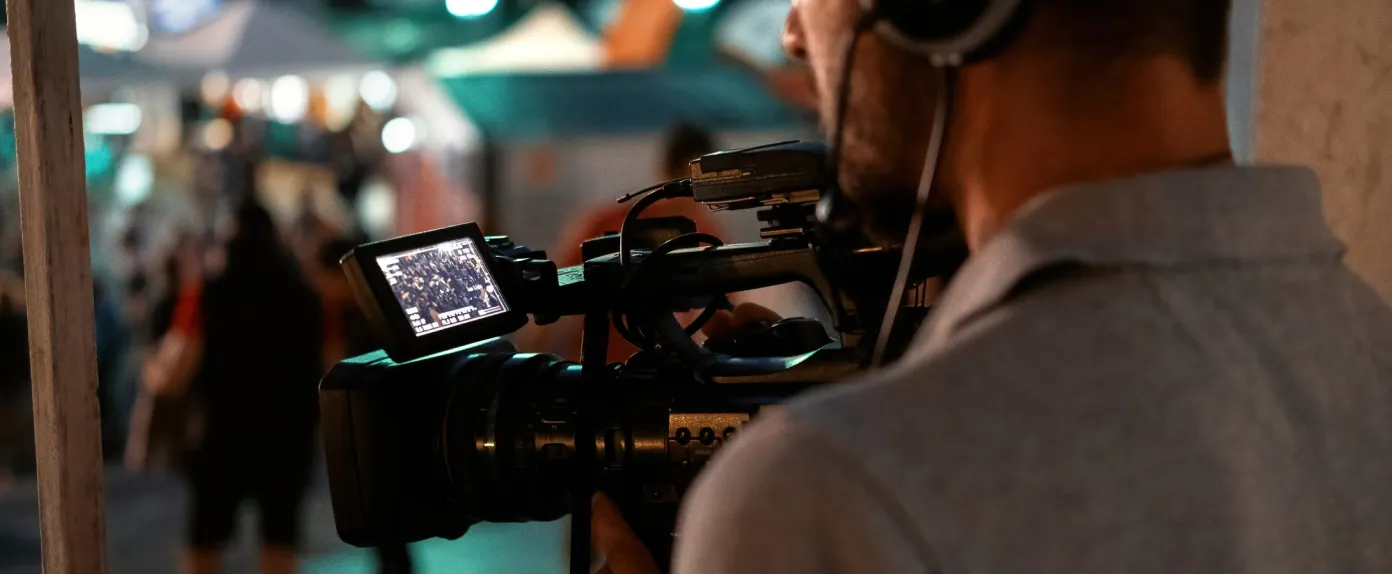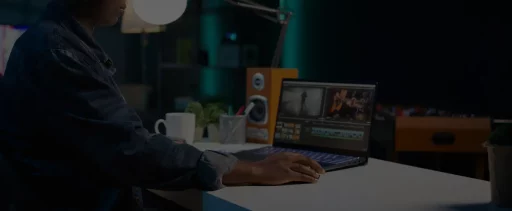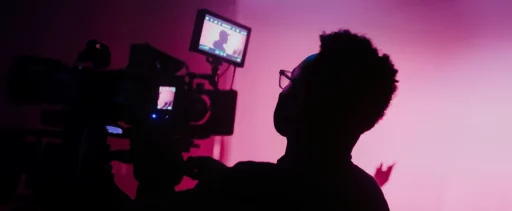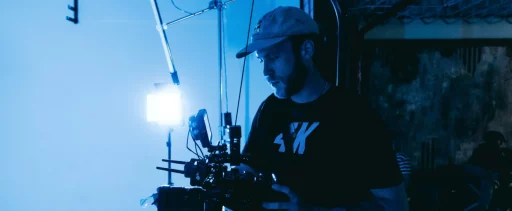The movie market is as dense as ever. According to a WIPO and Omdia joint report, 2023 saw 9,571 feature films produced globally, nearly double the pandemic low and even outpacing the pre-COVID peak of 2019. Here’s the fine print: a huge chunk of that growth is in the indie and micro-budget lane. We’re talking first-time directors, crowdfunded scripts, and “let’s just shoot it at my uncle’s cabin” energy.
In short, the production engine is roaring again. But distribution and movie marketing, not so much. Before diving into independent film marketing best practices, let’s capture a snapshot of the current state of the industry.
The State of Independent Film Marketing in 2025
Here’s the indie movie paradox: never has it been easier to make a film… and never harder to get anyone to see it.
The Window Closes Before It Opens
The big streaming platforms like Netflix, Amazon, Hulu, used to be the holy grail, but are now opting to develop proprietary content. Today, unless you’ve got Sundance laurels or a major-name lead (or both), don’t expect more than a polite pass.
Even in cases where big studio names and streamings are interested, they’re often not bankrolling full production anymore. Instead, they “top off” budgets, stepping in only at the final stage. Filmmakers without connections or a studio-aligned producer often don’t receive offers at all, even for free streaming rights. Mid-tier or micro-budget indies without noticeable talent often struggle to break through the noise.
Festival Gatekeeping and Pipeline Bottlenecks
Film festivals like Sundance, TIFF, and SXSW remain the golden ticket, they’re also more crowded and curated than ever. Programmers are under pressure to prioritize projects that come prepackaged with buzz, rep, and, ideally, a sales agent in tow.
This leads to a bottleneck effect, where even award-winning films struggle to convert festival acclaim into commercial success or distribution deals.
Budgets Are Shrinking, but Ideas Aren’t
With traditional financing getting nearly impossible to secure, indie filmmakers are getting scrappy, or, to be professional, are adopting ultra-lean production models: non-union crews, location shooting, deferred payments, and the actor who’s also your editor and your cousin.
But here’s the upside: limitations are birthing innovation. Independent producers are experimenting with interactive formats, social media platforms, and web3 tools (liek NFT-based crowdfunding and decentralized video platforms) to increase visibility and monetization potential outside of conventional channels.
Marketing Isn’t Optional
Here’s the part where some dreams go to die. You can make the next Moonlight in your backyard, but if no one sees it, it’s just a really expensive home video.
Filmmakers today are expected to act as entrepreneurs, developing their brand, building a mailing list, posting consistent content, and understanding platform-specific algorithms. And unfortunately, most indie filmmakers are spread too thin to accomplish this.

How to Build an Independent Film Marketing Strategy That Works When You Can’t Afford to Fail
After COVID punched the entire production ecosystem in the gut, you’d think it would be in a prolonged recovery coma. But the market is flooding with new cinema, and some, like Longlegs (2024) or Anora (2025), have their breakthrough, so it’s not impossible. Let’s list what works.
- Use Screenings to Build First-Watch Momentum
Despite our obsession with digital everything, local still matters. A series of community screenings, ideally spaced out and strategically timed, does more than just fill a room. It builds social proof, generates press mentions, and gives you a valuable asset: audience footage.
Audience interviews recorded post-screening can be repurposed for promotional clips or used to support a pitch to streaming platforms.
- Invest in Quality Poster Design
Indie filmmakers routinely undervalue poster design, but for many people coming across your movie for the first time, it can be a deal-breaker. In a world where attention spans are measured in milliseconds, a poster with bad fonts, unbalanced composition, or washed-out stills is the fastest way to lose interest.
Good posters are sales tools. Treat them like one. Look at your favorite films in the same genre. What fonts are they using? What’s the mood? The tone? When someone scrolls past your film on UVOtv, your poster may be your only shot.
- Spread Word of Mouth
Indie filmmaker communities are full to the brim with discussions of film marketing strategies that worked for them. Many mention packing a theater with 100+ people purely through word-of-mouth, or seeing multiple DVD orders after a TikTok post about their title going viral, often without even realizing it had been shared voluntarily by someone.
More often than not, people trust people. And that trust starts with authenticity. Make the first step and partner with voices who already serve your genre’s community.
- Collab with Micro Influencers
Following the word-of-mouth conversation, forget chasing blue checks. Influencer partnerships work when they’re real. One of the most effective tools for indie films today is micro-influencer collaboration. Think horror podcast hosts, niche film YouTubers, Letterboxd reviewers, or even TikTok creators who cover your genre.
These aren’t ads but relationships. A brief shoutout or film trailer reaction on a trusted channel can outperform expensive pay-per-click campaigns.
- Hire a Sales Agent
There’s cynicism around gatekeeping, and much of it is earned. By nature, film distribution, not to mention indie cinema, is a closed-door activity, since access to deals, platforms, or exposure is often controlled by a handful of insiders. So let’s hire one?
Having a connected sales rep can make all the difference. There were cases of signing a licensing deal with a major streaming service not through viral buzz or a glitzy festival, but via a rep who knew who to call and how to pitch.
It’s not exactly a marketing tactic, and it doesn’t promise you success or big profits. But access, at least. And in this business, access is currency.
- Send Emails, They’re Underrated
Your most reliable digital marketing channel? Your inbox. A dedicated landing page with a trailer, synopsis, and links to stream or buy is your digital HQ. Pair it with an email marketing plan—light, regular, and valuable—and you’ve got a direct line to your growing audience.
Think beyond the premiere. Build a list that lasts.
- Create a Press Kit
You don’t need a $10K publicist. But you do need a press kit. And if you can swing it, a wire service to distribute clean, newsworthy press releases. Having third-party media mentions—be it blogs, podcasts, or even local outlets—makes your film feel legitimate to streamers, distributors, and audiences alike.
This is less about ego, more about searchability. You want your film to be found, not just seen.
- Ads: A Risk, Not a Requirement
Digital ads are tricky territory for marketing campaigns. Some indie filmmakers do experience early spikes in TVOD sales through low-budget ad campaigns (under $100 per month), particularly in the horror genre. But almost all report steep drop-offs after 6–8 weeks.
The verdict? Ads may be effective, but only when paired with strong creative, genre specificity, and optimal timing. Otherwise, you’re burning dollars without a clear return.
- Use Your Personal Brand
You are the product as much as the film. That doesn’t mean becoming a content machine, but it does mean showing up, posting behind-the-scenes footage, sharing what went wrong, right, and what you learned.
Audiences want to root for people, not just projects. Community is built through story, and you already know how to tell one.
- Don’t Underestimate AVOD and FAST
AVOD (Ad-supported Video on Demand) and FAST (Free Ad-Supported Streaming TV) are quickly becoming a lifeline for indie movies that don’t fit the shiny subscription mold.
Not every film is meant for theatrical release, and not every project finds a TVOD home, while platforms like UVOtv are accessible, especially for genre films (horror, docs, faith-based). With the right packaging, metadata, and traffic through well-placed links and partnerships, you can slowly build an audience.
UVOtv reaches 70 million multilingual potential viewers across the U.S. and Canada, with monetization powered by ad revenue and backed by performance analytics. Learn more about what we offer to content creators.
Final Thought
You don’t need a massive production budget and marketing campaigns to make noise—you need the right mix of grassroots hustle and smart targeting. Think local screenings, authentic reviews, genre-specific outreach, and collaborations with people who already speak to your future audience.
In a saturated VOD and AVOD space, the winners aren’t always the loudest. They’re the ones who test, adapt, and keep showing up. Focus on formats that match your film’s tone and energy.
And sometimes, all it takes is a few well-placed advocates to turn interest into momentum. Start there.





